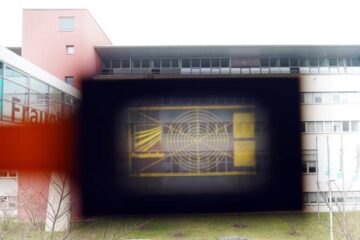Analysis of Copernicus putative remains support identity

The efforts to identify the remains of Nicolaus Copernicus (1473-1543), found under the cathedral in Frombork, was made in a collaborative project between Swedish and Polish scientists in a team consisting of archaeologists, anthropologists and geneticists. The results is published this week in the prestigious journal PNAS (Proceedings of the National Academy of Sciences).
At Uppsala University a DNA analysis was performed of shed hairs found in a book owned by Copernicus for decades, and now kept in Museum Gustavianum at Uppsala University.
“The analysis of several hairs resulted in interpretable profiles for four of the hairs. Of these, two of the hairs have the same profile as the putative remains of Copernicus”, says Marie Allen, researcher at Uppsala University.
The Uppsala researchers also made tests of a tooth as well as bone tissue from the putative remains of Copernicus. Results from the analysis of the remains from the Institute of Forensic Research in Krakow and the Museum and institute of zoology in Warsaw and the Uppsala laboratory were identical.
“Although these results points towards the materials being from the same individual, there is a probability of random match”, says Marie Allen.
The DNA material in this case was limited and also degraded. Therefore, a so called mitochondrial DNA test was performed, which yields a relatively low evidentiary value. This test is commonly used in criminal investigations, but as circumstantial evidence to strengthen the case.
“The DNA results should be looked at and evaluated in the light of, and together with the information from other disciplines as the archaeological, anthropological and facial reconstruction data”, says Marie Allen.
For more information, please contact Marie Allen, +46 708 92 44 44, marie.allen@genpat.uu.se
Media Contact
More Information:
http://www.vr.seAll latest news from the category: Life Sciences and Chemistry
Articles and reports from the Life Sciences and chemistry area deal with applied and basic research into modern biology, chemistry and human medicine.
Valuable information can be found on a range of life sciences fields including bacteriology, biochemistry, bionics, bioinformatics, biophysics, biotechnology, genetics, geobotany, human biology, marine biology, microbiology, molecular biology, cellular biology, zoology, bioinorganic chemistry, microchemistry and environmental chemistry.
Newest articles

Wildfire danger to increase due to climate change
WSL Institute for Snow and Avalanche Research (SLF) researchers expect an elevated wildfire danger in the Alpine Foreland from 2040 onwards due to changing meteorological conditions. The danger currently remains…

Advanced Brain Science Without Coding Expertise
Researchers at Helmholtz Munich and the LMU University Hospital Munich introduce DELiVR, offering a new AI-based approach to the complex task of brain cell mapping. The deep learning tool democratizes…

Transparent emissive microdisplays
… for ultra-light and compact augmented reality systems. As part of the HOT project (High-performance transparent and flexible microelectronics for photonic and optical applications), scientists from the Fraunhofer Institute for…





















